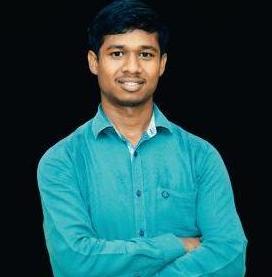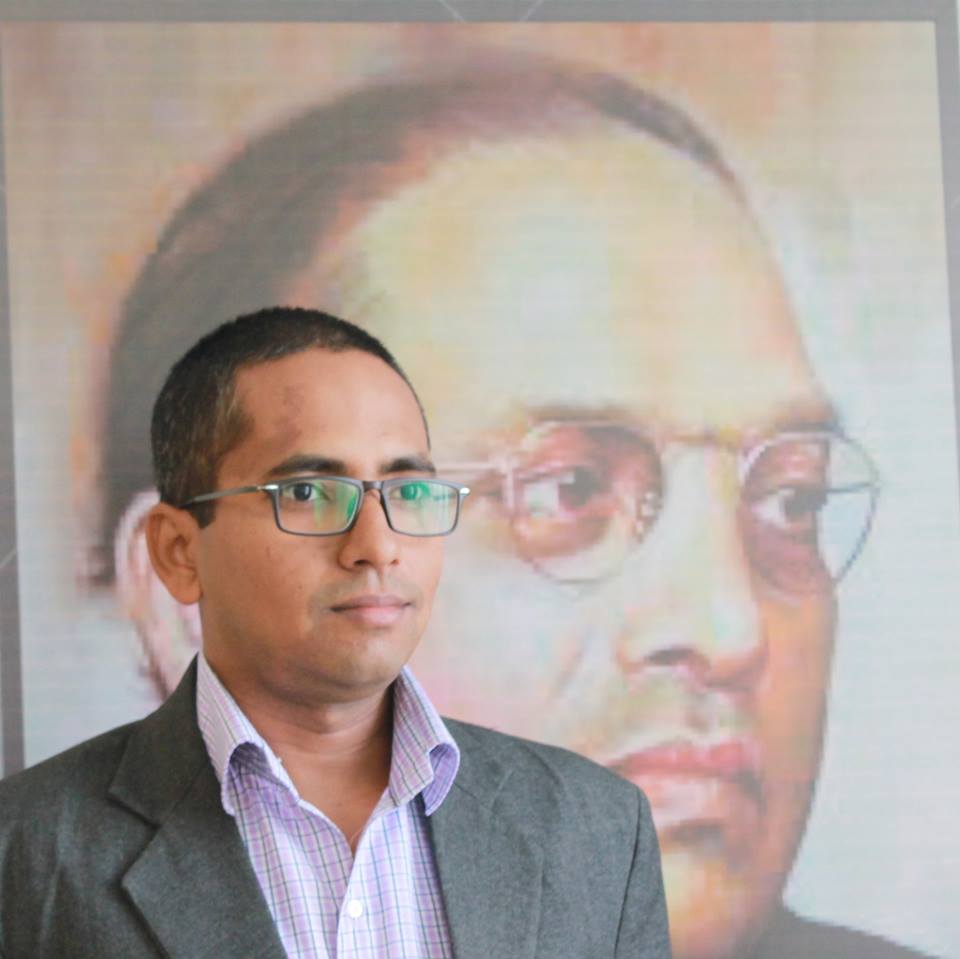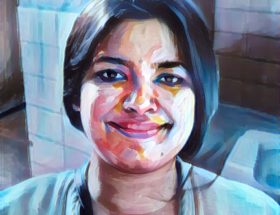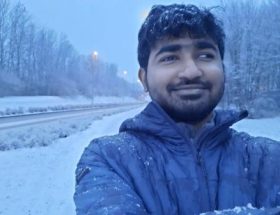| With spatial reference to Yavatmal |
Sachin Kamal
Introduction
The vulnerable section of society is always more at risk than the privileged one. Caste is the tool of systemic oppression in Indian society, divided by the social hierarchy. The rigid system is divided by the unequal distribution of power, resources, respect and assumption of competence. The lower castes have been experiencing oppression, exclusion and inequalities in opportunities for centuries. Still, they are not accepted as members of society; the situation slightly changed with the implementation of the Indian constitution, which protects the dignity of every individual, delivered fundamental rights and abolished the caste system. The lower castes got equal rights and opportunities to rise. But the new challenges of global warming are becoming barriers to the development of the depressed classes and pulling them back into vulnerability.
India faces multidimensional challenges to development. Dalits and Adivasis lag behind in most of the areas of human development indicators. Climate change is taking away livelihood opportunities due to soil infertility, drought, monsoon and natural calamities. These problems challenge efforts to organising limited resources and eliminate multidimensional poverty. This paper presents a systematic study of the impact of changing climate patterns and their implications on the socio-economically vulnerable communities of rural India, specifically the depressed class agricultural daily wage labourers of Yavatmal district, Maharashtra.
Caste in India
Indian society is enveloped in the shadow of oppression and exploitation. Millions are suffering from caste-based discrimination in India. The lower caste Shudras and the untouchables are the victims of the caste hierarchy. Knowledge becomes the right of particular castes, and so does power. The workers, peasants and artisans were called Shudras. The outcaste is untouchable, kept away from societal norms and forced to settle outside the village, eat the meat of dead animals, do manual scavenging and work as bonded labour.
The survey held by National Sample Survey Organisation (NSSO) 2022 mentioned the category-wise population in India, 40.94% are Other Backward Classes, 19.59% are from Scheduled Castes, and 8.63% of people are Scheduled Tribals in India. The assumption of competence in education, healthcare, sanitation, housing, healthy livelihood, and social status shows that these communities struggle with daily life. The place in the social structure consists of the Shudra and untouchables living in distress, destitute and poverty. The overall literacy rate of SCs and STs are 66.01% and 58.96%, respectively, which is less than the national average of 73%. The Periodic Labour Force Survey (PLFS) for 2017-18 said that the involvement of urban employability is just SC population of around 16 per cent and ST less than 3 per cent in 2017-18. The 110 million tribal population survives in geographically vulnerable and hilly regions, which limits the free transit of resources, education, healthcare and necessary goods. The primary and secondary livelihood sources of the Scheduled tribes and castes are agricultural labour, collecting forest produce, fishing, working and manual scavenging–all in the unorganised sector. Oppressive state policies like displacement, mining and lack of development work are causing deprivation to the tribals.
Multidimensional Poverty
“Poverty is pronounced deprivation in well-being and comprises many dimensions. It includes low incomes and the inability to acquire the basic goods and services necessary for survival with dignity. Poverty also encompasses low levels of health and education, poor access to clean water and sanitation, inadequate physical security, lack of voice, and insufficient capacity and opportunity to better one’s life.”
-World Bank
The World Bank gives a clear and broad definition of poverty but must include the lack of representation, power, resources and freedom. Poverty is the well-being of humans, not just the unavailability of food. Being poor is not just about income or money, it includes the standard of living, availability of healthcare and basic education, clean water, housing, and electricity, which gives a comprehensive idea about poverty: it is called ‘multidimensional poverty’. The welfare state considered and pledged itself to provide basic amenities and services to everyone to survive with dignity. People’s right is to get sufficient food, education, healthcare, and housing and state its accountability to provide it. According to the World Bank (2019), 10.2% of the population, meaning nearly 140 Million people, is suffering from extreme poverty in India.
The primary source of employment for the marginalised is daily agricultural labour and farming. The Scheduled Tribes group accounts for 9.4 per cent of the population and is the poorest, with 65 million of the 129 million people living in multidimensional poverty; the Scheduled Castes group with 33.3 per cent — 94 million of 283 million people live in multidimensional poverty; in the Other Backward Classes group, 160 million out of 588 million people live in multidimensional poverty. The Global Multidimensional Poverty Index (GMPI) report states that five out of six people living in multidimensional poverty in India are from disadvantaged tribes and castes. STs (50.6%) had the highest poverty level, followed by SCs (33.3%) and OBCs (27.2%).
Discussion
Yavtmal district belongs to the drought-prone Vidarbha region of India; farmers still produce cotton which their colonial masters imposed on them. Farmers are killing themselves due to vulnerability, heavy monsoons are frequently washing out the crops, wildfires are burning their land and the forests, and the fertility of the land is decreasing. As per Census 2011, The Scheduled Castes (SC) constitute 11.8% of the total population while the Schedule Tribes (ST) are 18.5%. These communities depend on the weather for their livelihood, as the majority of them are involved in agricultural activities which falls in the unorganised sector.
Climate change is adding to this vulnerability, mainly impacting the unorganised sector, agriculture and fishery, as they are losing their livelihood. In August 2022, the Yavatmal district experienced the worst climate disaster. The district depends on the south-west monsoon for agriculture. The monsoon arrived a month late, and in August, it rained continuously. The wet month affected the labourers who have to work daily to feed their families. But the rain would not allow them. Agriculture labour is seasonal, mainly for eight months of the year. In 2022, Agricultural labourers lost 60 work days due to extreme climate conditions. Natural disasters, climate catastrophes, and health emergencies are pushing the vulnerable sections of society into multidimensional poverty. These communities historically contributed least to climate change but are disproportionately affected the most.
Agriculture plays a vital role in India’s economy. 54.6% (Nearly 750 Mn) of the workforce is engaged in the agricultural and allied sectors living in the rural area. The primary source of employment for the 250 million people is daily agricultural labour, and farming is being affected badly.
In the rural hinterlands of India, Pakistan, Nepal and Bangladesh, ‘water riots’ are breaking out – in rural Yavatmal, the dominant upper caste women are not allowing the Dalit women to use the government hand pumps and wells amid a water crisis. Dalit women are beaten up if they try to access these institutionalised potable water sources. To escape physical violence, Dalit women travel more than a kilometre outside their villages to collect water. This is not an isolated incident. In India, the scarcity of water leads women to travel miles to collect the water; it takes time and work hours and negatively impacts on health, children’s education and constitutional rights.
Conclusion
“The hierarchy of caste is not about feelings or morality. It is about power – which groups have it and which do not. It is about resources – which groups are seen as worthy of them and which are not, who gets to acquire and control them and who does not. It is about respect, authority and assumptions of competence – who is accorded these and who is not.” – Ritwajit Das, Caste and climate change. This rigid system is divided by the unequal distribution of power, resources, respect and assumption of competence. The lower castes are experiencing oppression, exclusion and inequalities in opportunities. Schedule Castes are the most vulnerable communities in India. As per the Census 2011, 71% of Scheduled Castes work as agricultural labourers; female workers earn 120-150 rupees per day. The amount is lower than the world bank poverty line. Five out of six multidimensionally poor people are from lower tribes or castes. (Worldbank.org).
According to Isabel Wilkerson, Pulitzer Prize Winner Journalist with New York Times, in her recent article America’s Enduring Caste System, July 2020: caste is the powerful infrastructure that holds each group in its place. Its very invisibility is what gives it power and longevity. And though it may move in and out of consciousness, though it may flare and reassert itself in times of upheaval and recede in times of relative calm, it is ever-present through the line in the country’s operation.
Institute for Climate Impact Research and Climate Analytics reports says that the average temperature in South Asia will rise between 2C to 4C by 2030, worsening socio-economical and environmental conditions. The unequal development patterns in developed and developing countries and the unequal income distribution among the people keep the marginalised sections vulnerable. They do not even have the resources to overcome the climate challenges. India, with its low per capita income, social inequalities, social exclusion and poverty becomes the main challenge to climate mitigation strategies.
Firstly, India has to acknowledge caste as discriminative systemic oppression that hinders social justice, that will lead to providing climate justice. Climate change is an elite concept here as Indian societies still struggle for basic constitutional rights and a fair chance to live and survive—the need to focus on livelihood, caste and poverty. The global stage needs to discuss and act to provide climate justice to everyone and to start from the most environmentally vulnerable communities.
Sachin Kamal is a farmer, social and climate activist. He has done MA in Social Work (Community Organisation and Development Practice) TISS Mumbai. He is currently working with NITI Aayog in Aspirational District Program in Maharashtra.










